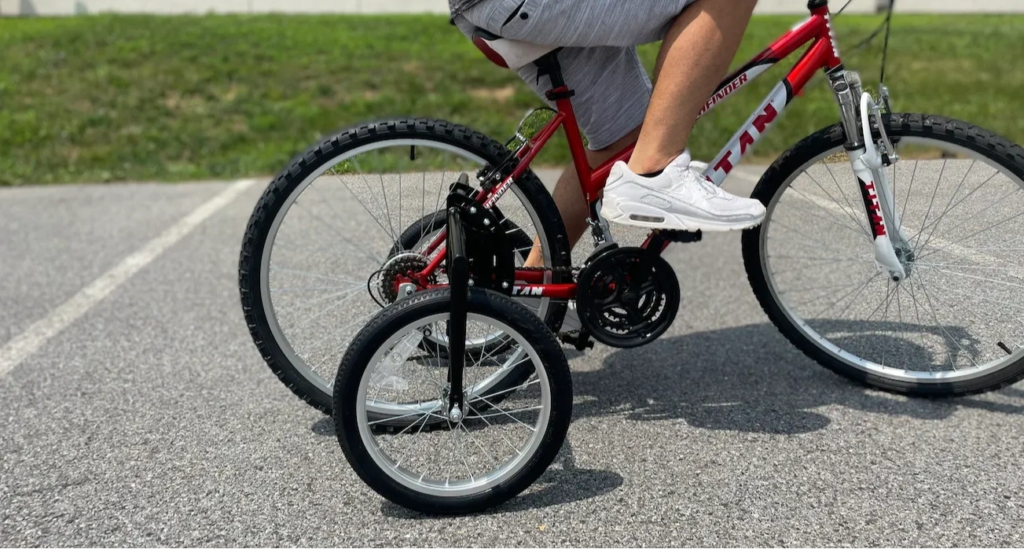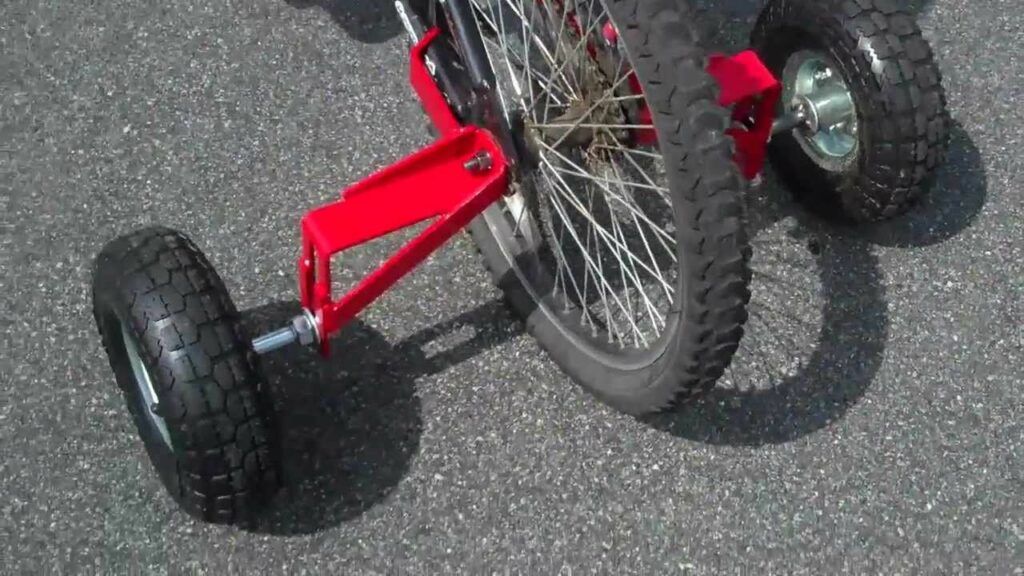Training wheels are a pair of wheels attached to the sides of the rear wheel of a bicycle. Almost all of us might have used training wheels at some age to learn how to ride a bicycle. But is that it? Are training wheels just for training you to ride a bicycle? When I researched this topic, I learned so much about training wheels and their use beyond just teaching how to ride a bicycle.
Disability is dynamic
Training wheels are great for an individual who is trying to learn how to ride a bicycle. Initially, training wheels can help us to balance and ride a bicycle. Once an individual gets the hang of riding a bicycle, they are good to remove the training wheels and use the bicycle as it is. Training wheels don’t really have an age limit. People from all age groups can use them if they want to learn to ride a bicycle. It is just amazing how this tool is so simple and functional at the same time!
As I think more about it, I understand how disability can be temporary. We are not born with the sense of the world around us, but we adapt and learn it. Similarly, no individual is born with the skill of riding a bicycle, we adapt and learn it as well. That’s why we can mostly find training wheels among kids who are growing and still are developing their sensory organs. Even older adults make use of training wheels while riding a bicycle. As an individual grows old, they cannot maintain balance properly due to restricted physical movements. Thus, to ride a bicycle to keep themselves fit, they must use training wheels. Training wheels thus become a great tool to overcome temporary disability where an individual cannot balance a bicycle or ride it without falling.

Training wheels for people with disabilities
Now the question is, are training wheels suitable for people with disabilities? When I thought more about it, I learned that training wheels are used by people with a balance disorder or autism. A balance disorder is a condition that makes an individual feel unsteady or dizzy. For example, if you are standing, sitting, walking, or lying down, you might feel like moving, spinning, or floating. A balance disorder can be caused by medications, ear infection, a head injury, or anything that affects the inner ear or brain. Balance disorder makes it hard for an individual to do their day-to-day activities. That’s why training wheels come in handy for people with balance disorders to ride a bicycle. These wheels help them to have confidence while riding a bicycle and not injure themselves while doing so. For people with autism, they can experience sensory processing problems and delayed movement skills. These issues can be a problem for people with autism to involve in activities such as riding a bicycle. Training wheels over here can also help people with autism ride a bicycle without being in fear of getting injured.

Training wheels thus become a tool that people with disabilities can use. It gives them a sense of confidence and helps them enjoy an essential activity such as cycling. I think no one should miss out on any opportunity just because of their disability, and everyone should get an equal chance. Such is the mission and vision for Fatwheels, where they make adaptive training wheels for people with disabilities and older adults so that they can once again enjoy the fun, fitness, and freedom of cycling without the fear of falling.
Training wheels are an excellent example of an accessible product because they fall rightly under utility, usability, and accessibility. Everyone from anywhere can use this product. It is just a matter of choice. These can be used by people with disabilities and people who already know how to ride a bicycle. They are a permanent solution for people with disabilities and a temporary solution for people who want to ride bicycles. Training wheels are also very affordable as they cost very cheap and are available anywhere. And they also do not require much maintenance and can be installed in any cycle, making them compatible.

Training wheels and models of disability
Medical model: I disagree that training wheels fit appropriately in the medical model, but they play a part! People with autism suffer from significant difficulties in relationships and communication. They cannot actively participate in social life, and they sometimes struggle to get involved in group activities. More importantly, they often have not developed a functional verbal language, and the frustration of not being understood, together with the boredom of empty free time. That’s why people with autism engage themselves in creative therapeutic activities. Riding a bicycle is one of those activities. Riding a bicycle enhances the strengths of people with autism without requiring sophisticated relational and communicative skills. And for riding a bicycle, people with autism do need training wheels to involve in this activity. That’s why I think training wheels are not entirely based on medical models, but they do play a part.
Social Model: The training wheel does fall rightly in the social model of disability. I feel bicycles are not designed by considering the needs of everyone. Bicycles are very biased towards people with disabilities. You need to judge not only yourself but also the space around you to ride a bicycle. People riding bicycles are sure about not getting injured or injuring someone around them. Bicycles are designed by and for people who have a sense of understanding of the world around them, who can judge speed and movements, who have quick reflexes, and who have developed sensory organs. These are the reasons that leave behind people with disabilities from riding a bicycle. Thus training wheels are a perfect example that fits in the social model. They do not see disability as a problem and believe that the problem is in the design of the bicycle. Training wheels gives equal opportunity to people with disabilities to engage in the activity of riding a bicycle.
Conclusion
Even though bicycles limit their usability to people with disabilities, training wheels do provide a solution! They can not only be used by people with disabilities but also by kids and older adults. Even though training wheels are such a simple tool, they provide multiple uses. Training wheels are a budget solution with less than one-third of the cost of purchasing the adaptive bicycle, and you can have a regular cycle with training wheels installed. After researching this topic, I believe that training wheels set the right example for usage, either by kids, older adults, or people with disabilities. Marking on what I said earlier, everyone should be given equal opportunity and the chance to engage in day-to-day activities without making them feel special or out of place.
References
